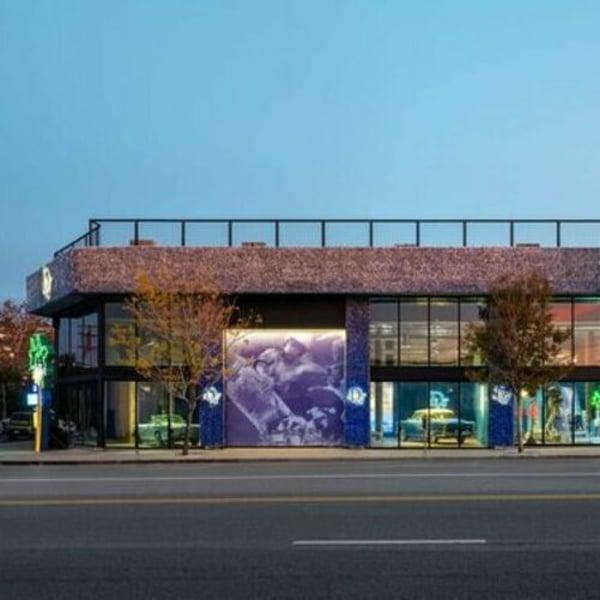Translated by
Nicola Mira
Published
Sep 7, 2023
Pop-up stores are more flexible and less costly to run than traditional ones, and have become an essential tool for the luxury industry in terms of revenue, brand image, promotion and innovation. They are cropping up everywhere, broadening fashion labels’ horizons notably in Asia and in the industry’s less significant commercial regions, according to a study by luxury intelligence specialist Luxurynsight.
Luxurynsight has carried out an in-depth analysis of the retail initiatives staged in H1 2023 in 20 strategic locations by 15 of the best-known luxury labels, among them Balenciaga, Bulgari, Cartier, Dior, Gucci and Louis Vuitton. The aim was to gain a more thorough understanding of the retail strategies deployed by the industry in the wake of the pandemic.
“In the four years since the start of the Covid-19 pandemic, the number of monobrand stores in the luxury sector worldwide has increased by very little, growing only 0.5%, notably in Asia-Pacific, Europe and the Middle East,” said Luca Solca, senior luxury analyst at consulting firm Bernstein. Solca underlined that labels have been inclined to open larger and larger stores. A phenomenon that has actually driven the rise of pop-up stores, as temporary commercial spaces make it possible to add fresh sparkle to these new, jumbo-sized flagships.
Pop-up stores also act as temporary substitutes and springboards for permanent ones, enabling labels to test new locations and launch new projects and targeted marketing initiatives in department stores and multi-brand retail chains. Luxurynsight found that, after the pandemic, labels turned to opening this type of commercial space, and physical stores in general, “in order to attract affluent domestic consumers in untapped markets, like emerging and second-tier cities,” introducing new formats that allowed labels to innovate both commercially and in terms of the customer experience.
Ultra-personalised creative experiences
“Retail innovation is now governed by the new essentials (immersive installations, phygital integration, edutainment elements, highly personalised products and services, and environmental awareness), by the internalisation of customers’ values, and by the ability to create connected, technology-driven eco-systems, welding together a fragmented commercial landscape consisting of multiple formats and platforms into a unique experience,” said Luxurynsight in the study.
“In today’s interconnected world, customers are looking for an engaging shopping journey that includes ultra-personalised creative experiences in tune with their values,” indicated the study. According to Luxurynsight, 49% of luxury goods consumers think that labels ought to offer more than mere purchasing opportunities in their stores. Between now and 2030, 80% of customers expect to find ultra-personalised in-store experiences tailored uniquely to them.

In this context, the pop-up store has turned out to be the most appropriate format to develop and experiment with all kinds of experiences, from unique, strikingly furnished multi-sensory spaces to showcases for targeted products and initiatives, like limited-edition capsule collections or the introduction of a bespoke service. Pop-up stores are cheaper to run than traditional ones, and enable labels to set up shop for a limited period of time in upscale locations.
When labels open temporary stores, they become bolder. It seems that anything goes, from the size of the retail area to the interior décor, as was the case with the huge space Dior took over at 8175 Melrose Avenue in Los Angeles in January. The premises included a restaurant, and were used by Dior to present, amidst assorted limousines and Cadillacs, the California Couture collection designed in collaboration with ERL. With its size and originality, the space was a big draw for the public.
Other labels, most of the top luxury ones in fact, took advantage of the summer season to deck out beaches and sea resorts in their colours. Pop-up stores also give the opportunity to showcase a brand’s history and heritage, morphing into shops-museums, as was recently done by Cartier. Between May and June, the luxury watches and jewellery brand opened the ‘Culture of Design’ pop-up space in Sydney, Australia, exhibiting a selection of its heritage items. Another fine jewellery brand, Bulgari, dedicated a lavish temporary space to its iconic Serpenti collection in Beverly Hills in April.
The vast majority of the pop-up stores opened between January and June 2023 were located in Asia, mostly in China and, to a lesser extent, Japan. The USA followed numbers-wise, and behind them came France, the UK, the UAE, Italy, Germany and Mexico. The three main locations in China were Shanghai, Chengdu and Shenzhen, followed by Beijing and various second-tier cities. In Japan, Tokyo was far ahead of Osaka, Nagoya and Fukuoka.
Luxurynsight noted that, besides Seoul in South Korea, other Asia-Pacific destinations were extremely popular, like Sydney and Brisbane in Australia, Phuket in Thailand, Jakarta in Indonesia, Singapore, and Kota Tinggi and Kuala Lumpur in Malaysia.
Copyright © 2023 FashionNetwork.com All rights reserved.







